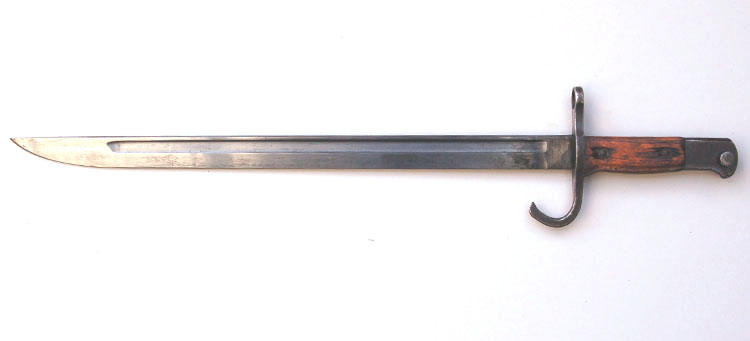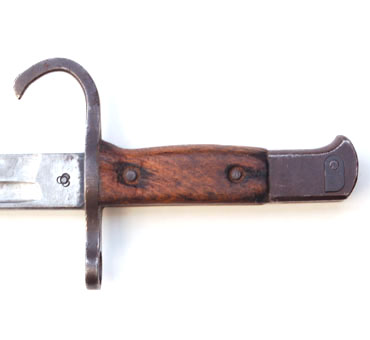
| Type 30 "Arisaka" (M1897)
Technical data : Total length : 492 mm Was used on : Typ 30 "Arisaka"
General information : Until the mid of the 19th century, Japan used to be a country which was isolated, far away from the Western world. A good example to illustrate this isolation is their warfare and weaponry at that time. It's only after 1853, when the first Western trade expedition was allowed to enter the country, that the Japanese army started the modernisation of its tactics and equipment. In 1897 the Japanese Imperial Army chose to equip its troops with the Type 30-rifle and bayonet. These were an invention of the kolonel Nariaka Arisaka. The number "30" refers to the 30th year of the reign of emperor Mejing, being 1897. The T30 bayonet can be used on all Japanese rifles from 1897 until after the Second World War. During the more than 50 years of its use, many variations of the T30 bayonet were created. Some to improve its design, others to cope with the lack of ressources or to shorten the production process. The first models had a fullered blade, a forward bent quillon, wooden handels and a rounded steel pommel. It was based on this design that the British developed their P1907 bayonet. As Japan disposed of very limited ressources, shortage of steel and wood, production facilities and manpower, forced them to modify the design and restrict the use of materials. The Type 30 became more and more "basic" as it transformed from a high quality bayonet to a more or less sharp piece of steel with wooden grips without a pommel. Scabbards were no longer made of steel and solutions in wood, bamboo and even molded rubber were introduced due to the lack of steel. The T30 offers a broad field of collection as dozens of variations in models and used materials exist. On top of that, most of the manufacturers and subcontractors made the bayonets a little bit different than the others. Be aware for cheap Chinese copies which are being offered since a few years now. Most of these copies, often with very bright rubberwood en a quillon facing to much upwards, don't even fit the Arisaka rifles. Known makers : Howa Jyuko Images.
© www.bajonet.be |
||||||||||||||||||||||||||||||

